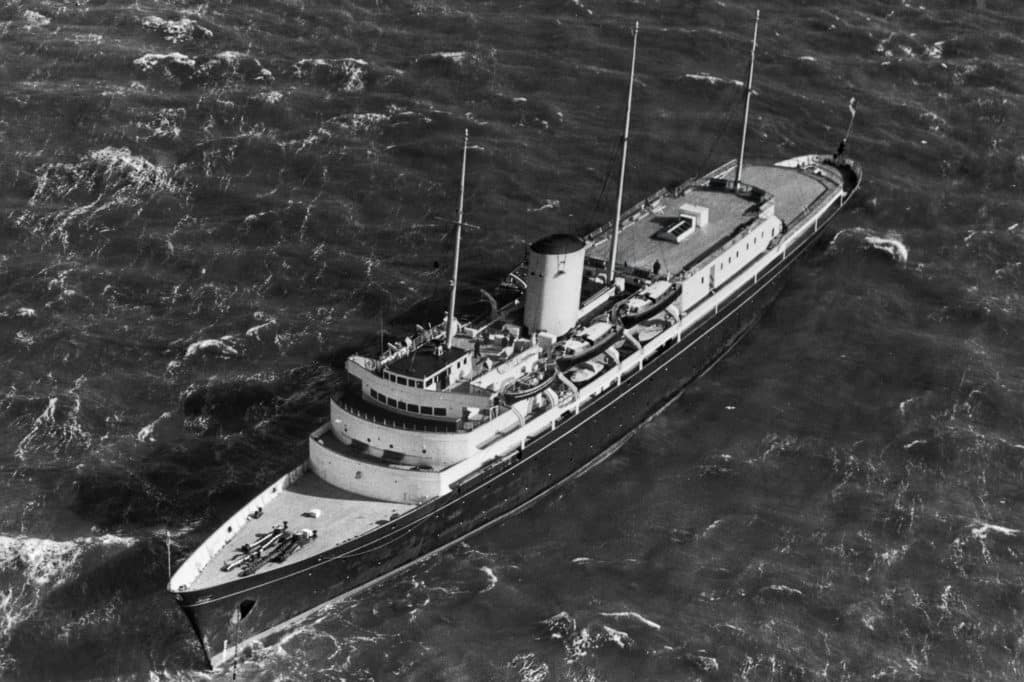
There are yachts, and there are superyachts, but royal yachts tend to be something else again. The United Kingdom hasn’t had a royal yacht for almost 25 years, but the British government just announced its intention to replace Her Majesty’s Yacht Britannia.
No firm details have been released of what this replacement could be, but design proposals were recently invited. Time is of the essence, given that the official policy statement came with a proposed launch date just three years away.
The open brief suggests that what is needed now is less yacht, more national ship—a world-first build. Prime Minister Boris Johnson says he sees the vessel as more of a floating embassy to support royals and government ministers alike.
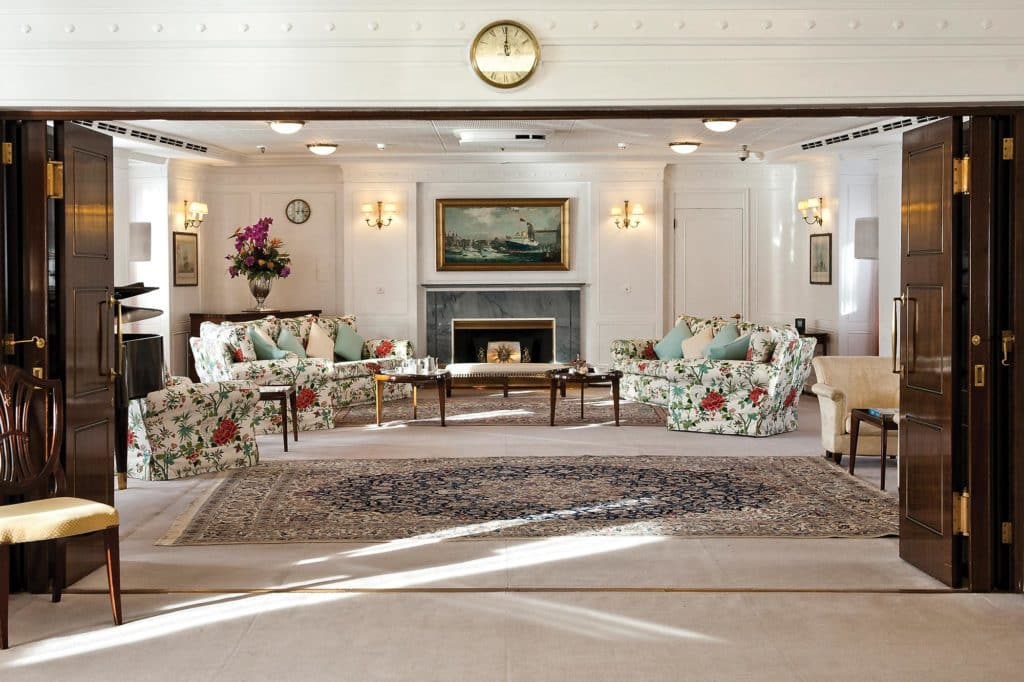
That concept is broadly familiar. During its 44-year service life as a ship of state, Britannia racked up more than 1 million nautical miles and 696 foreign visits. Every itinerary was about promoting the United Kingdom and the Commonwealth, and trade promotion was always a part of the job description. For instance, Britannia made several trips to the United States, including both coasts and Chicago via the St. Lawrence Seaway. Various presidents and their wives were guests aboard, including Dwight D. Eisenhower, Gerald Ford, Ronald Reagan and Bill Clinton.
But what defines a royal yacht?
It’s not just about scale, although the eight-deck, all-steel Britannia was one of the biggest yachts in the world when it launched. It was built at Scotland’s John Brown and Co. of Clydebank, the same yard that built the ocean liners RMS Queen Elizabeth and RMS Queen Mary. Britannia entered service in January 1954, one year after Queen Elizabeth II’s coronation. Her late husband, Prince Philip, was a former naval officer and enthusiastically oversaw Britannia’s specification and construction.
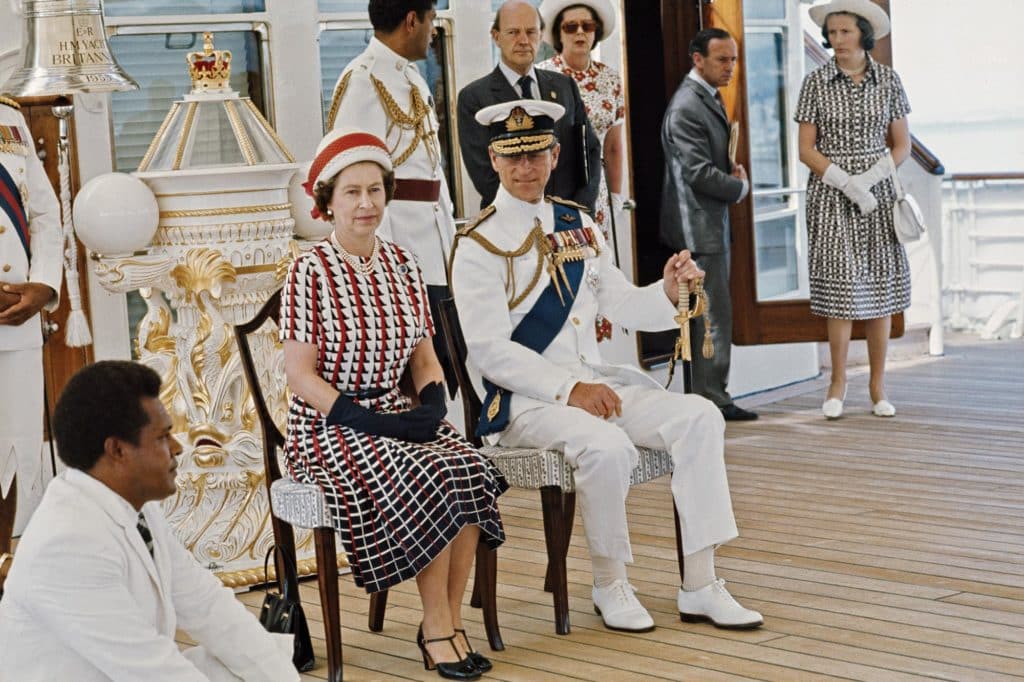
The yacht, beyond its routine duties, could rapidly convert to a 200-bed hospital ship or an offshore refuge for the royal family in case of nuclear war. Britannia is 412 feet length overall, has a 55-foot beam and measures 5,862 gross tons. Thanks to two turbine sets producing up to 12,000 hp, Britannia was capable of a continuous 21 knots throughout its service years.
Those were the days when a yacht of that size was unusual: There are now almost 30 giga-yachts afloat with more gross tonnage than Britannia. Only a quarter of them have any obvious royal affiliations.
But in its day, Britannia was an operation to behold. The yacht was home to 21 officers and 256 sailors of the British Royal Navy and could host functions with 250 guests. The staterooms and staff quarters were aft, and the crew were forward. The yacht’s complement included a Royal Marines guard detachment in separate onboard barracks, a 26-strong military band, and a full general surgery team with an operating theater. The permanent noncommissioned crew were known affectionately as the “yotties.”
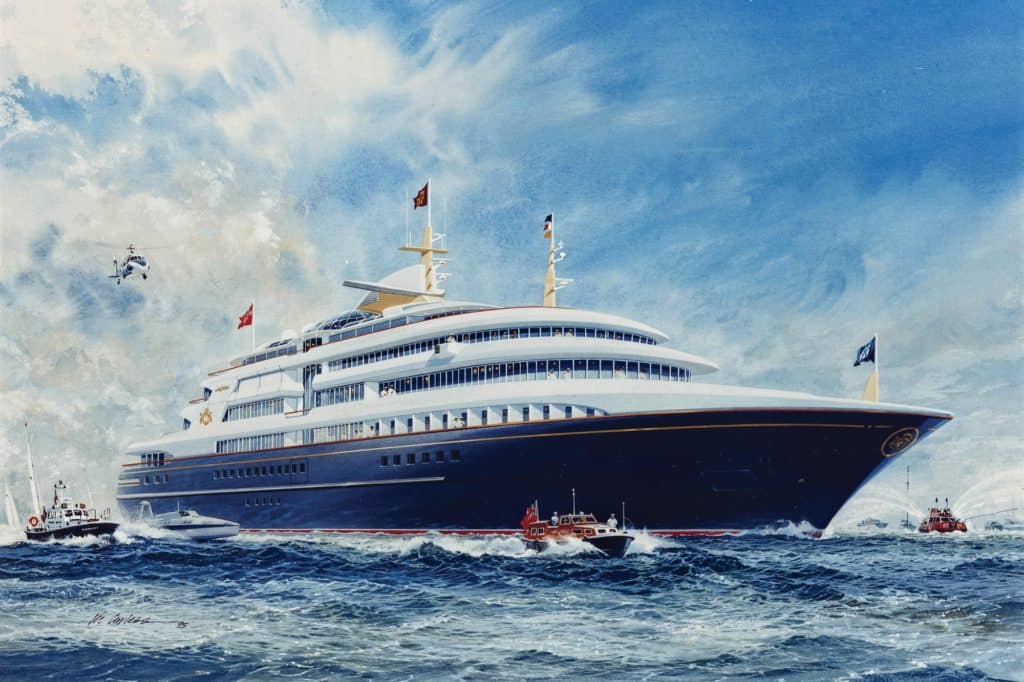
Britannia was where the most senior members of the royal family stayed when on suitable official visits. It was not where they would normally spend vacations, although Prince Charles and Princess Diana famously used Britannia for a honeymoon cruise in the Mediterranean. They had the yacht’s only double bed installed aboard.
As for Britannia’s successor, various sources have quoted ballpark figures for the build in the low hundreds of millions of dollars. The final specification will depend on how much space is practical for conference and entertainment areas, the number of guest staterooms, the crew complement, helicopter use, tenders, provisions, technology, and security. Johnson also says he wants the vessel to incorporate cutting-edge green technologies and showcase best practices with regard to sustainability.
The new yacht is expected to have a service life of at least 30 years. Given that trillions of dollars’ worth of trade deals were reportedly secured aboard Britannia, the cost for that lifespan is not expected to be a concern.
Construction could start as early as next year, following consultations with the royal family, the Royal Navy and various government departments. The vessel will officially be the responsibility of the Ministry of Defense and classified as if it were a warship.
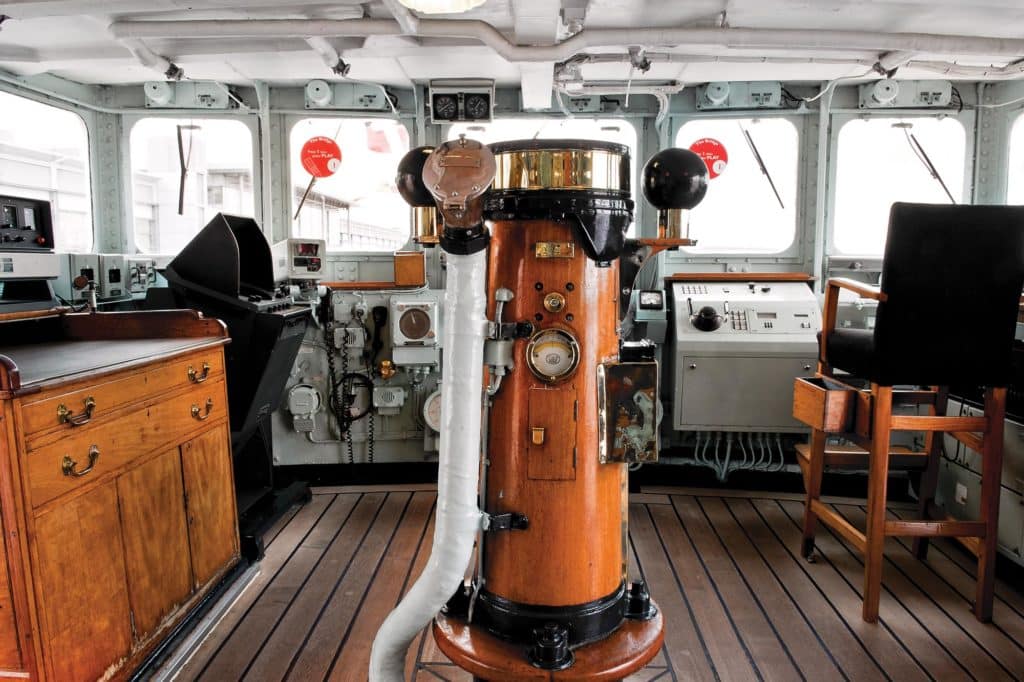
Floating History
Now retired, royal yacht Britannia lies permanently in Edinburgh, Scotland. This vessel has been one of the Scottish capital’s most popular tourist draws for more than 25 years. It is open daily and sees more than 1,000 visitors a day. Guided tours take in all areas, including a view into the queen’s bedroom, private sitting rooms, state dining room and drawing rooms, sun lounge and veranda, bridge, crew decks, and engine room.
The First Royal Yacht
The wooden wheel aboard Britannia came from the only other royal yacht to bear the name, the much older 122-foot gaff-rigged cutter Britannia. Built for Prince Albert Edward, who later became King Edward VII, it was famously campaigned at big-boat
regattas by him and his son, King George V. The yacht launched in spring 1893 and was a near-sister to Valkyrie II, which unsuccessfully challenged the Nathanael Greene Herreshoff-built Vigilant for the America’s Cup that same year. Both Valkyrie II and Britannia
were designed by George Lennox Watson and built at the D&W Henderson Shipyard in Scotland. Following George V’s death and per his wishes, the vessel was stripped of its spars and fitting, and scuttled in deep water off England’s South Coast on July 10, 1936.









